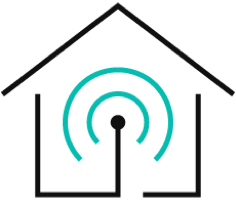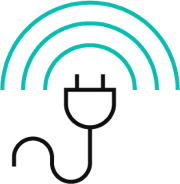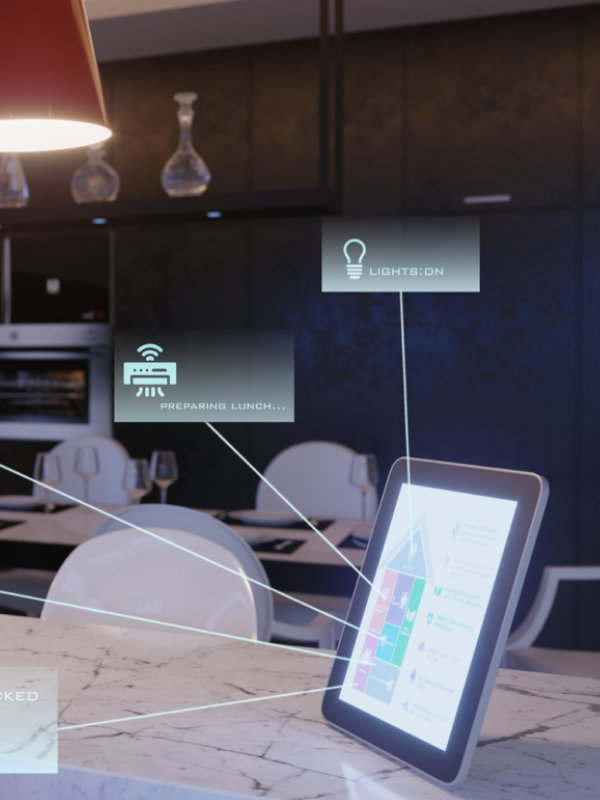The rise of smart home technologies leads the pack in our never-ending quest to make our lives easier and more convenient.
Who hasn’t imagined living in the futuristic world of the Jetsons, with its robot maid, automatic chairs, 3D printed food, robotic vacuums (oh wait, we have that one), and flat-screen TVs? (My goodness, we already have that one too!)
Believe it or not, much of the technology from the 1960s-era television cartoon has already been invented. Today, smart home technology is easily within reach of the average homeowner, making the smart home of the 21st century reality and help with sustainability.
- Part 1. Trends in Smart Home Technology
- Part 2. The Benefits of Smart Home Technology
- Part 3. Is Smart Home Technology Safe?
- Part 4. The Future of Smart Home Technology
Part 1. Trends in Smart Home Technology
A recent Global Smart Home Market report published by the Research and Markets website expects the global smart home market to grow to $135.3 billion in 2025, bringing smart home technologies within reach of the average homeowner.
The increasing integration of mechanical systems during and post-building construction leads the charge for the adoption of smart home technology, with consumers demanding more intelligent homes as a condition of the purchase.
Tighter integration means more sophisticated device communication and cooperation within your home, as demonstrated by the smart home technology history of continuous improvement of the products.
Popular Smart Home Applications
Several catalysts are driving the growth of smart home technology. But the primary factor is undoubtedly consumers demanding it. Some of the many applications for home automation include:
- Energy Savings
- Health Monitoring
- Home Security
- Home Theater
- Motion Sensors
- Smart Appliances
A close second to consumer demand is that the public is becoming far more educated about the benefits of wireless technology and how it can make their lives easier.
Based on these factors, it’s clear that consumers are clamoring for newer, more sophisticated smart home solutions to satisfy demand, despite serious questions about the ethics of smart home technology.
Smart Home Construction
More builders are designing homes with greater levels of technology in mind by integrating automation conveniences from the ground up. For example, adding outlets under the eaves in the corners of your roof allows for spotlights and power for security cameras.
Running coax cabling and HDMI to every room in the hours gives you flexibility for your home entertainment without miles of cables running along baseboards, and makes life a lot easier.
Built-in timers with motion detection sensors to control outdoor lighting that tracks the sun and saves electricity but activates when there’s movement outside your home.
Remote-controlled walkways, mailboxes, and tree lighting are added conveniences offered by many builders that homeowners are enjoying.
Motion sensor lighting in closets, bathrooms, hallways, and bedrooms can save energy and add convenience to any new home.
If you install ceiling fans, adding a second wall switch can save you from the annoying problem of yanking a chain out of the fixture, leaving the fan in whatever state it was in before the accident.
Running electrical lines to an outdoor shed to power motion sensors, lighting, heating, and ceiling fans are often overlooked automation conveniences.
And don’t forget the garage for smart device opportunities as well. In addition to a remote-controlled garage door opener with an automatic light, plenty of electrical outlets are always handy for added conveniences like an extra refrigerator, freezer chest, plugging in power tools, battery chargers, or charging your golf cart or electric car.
Also, extra outlets on your deck are often missed as chances to add smart devices for outdoor entertainment.
A remote-controlled home theater system connected to speakers built into the ceiling in each room in the house is a luxurious way to pipe music everywhere in your home.
The Influence of Artificial Intelligence
AI is playing an increasingly critical role in the development of smart home technology deployment. Voice assistants powered by artificial intelligence are becoming commonplace with the market penetration of devices like Amazon Alexa and Google Home.
AI-enabled devices allow you to interact with your home in ways that weren’t possible a mere decade ago, bringing unimagined luxury and convenience to the average homeowner.
Part 2. The Benefits of Smart Home Technology
The Internet of Things is making the average home a living, breathing, smart building with features and conveniences only the rich could afford a decade ago, more commonplace today. Here’s a list of ten of the most installed smart home technologies available:
- Alarms — Enhance your security with perimeter alarms consisting of flashing lights, wailing sirens, and other loud noises to alert neighbors and direct law enforcement to your home during an emergency.
- Automatic Appliance Shutoff — Never worry about leaving your stove or grill running again with sensors to turn them off after a preset time automatically.
- Customization — You can train your home to adjust to your habits and preferences for the ultimate in comfort.
- Energy Management — You can manage your lighting, cooling, and heating systems to save money on electricity costs.
- Flood Sensors — A leaky water heater, overflowing sink or toilet, or burst pipe can be detected and trigger an alarm for early detection to avoid costly damage.
- Health Monitoring — Encourage more independent living for the elderly by enabling you to check on their well-being.
- Motion Detection — You get double benefit with motion-activated sensors that control lighting to save energy or act as a security deterrent against intruders.
- Remote Monitoring — You can manage the devices in your home from anywhere you have an internet connection, whether across town or on the other side of the world.
- Security — Automatically turn security systems on and off to give your family and home around-the-clock peace of mind and safety.
- Video Analytics — You can train your video surveillance system to ignore nuisance alarms triggered by animals, non-threatening humans (like your letter carrier), passing vehicles, and vegetation motion caused by the wind.
Part 3. Is Smart Home Technology Safe?
While the proliferation of home automation is generally viewed as an overwhelmingly positive development, you should also be aware of some of the dangers of smart home technology that comes with its widespread adoption. Here are a few threats to consider:
- Identity Theft — Data breaches of smart-device vendors can expose the data of the company’s entire database. If your data is hacked, you’ve got big problems. The data thief can apply for loans, mortgages, and credit cards in your name, running up balances to the tens of thousands of dollars before you know it. Untangling the mess created by identity thieves can take months and sometimes years to fix.
- Using Default Passwords — One of the most easily avoidable security risks is always changing the default password that comes with smart devices to a complex replacement that’s difficult to guess. Without a secure password, a clever hacker can manipulate the devices in your home, causing major inconveniences.
- I-Spy — If you inadvertently click a malicious link on a mobile device or computer, it can broadcast your physical location, enabling a hacker to know where you are. You can protect yourself by not clicking suspicious links and establishing a second home network dedicated to smart device communication.
- Burglary — Your home can be physically breached if you’re using devices like smart door locks and security cameras, and your system contains unidentified security gaps. Protect yourself against intruders by installing security bars and a dumb backup alarm not connected to your home Wi-Fi.
- Damaged Appliances — Vital appliances like your HVAC system and the oven can cause significant damage to your home and even threaten your life if a hacker gains control and forces them to overheat while you’re away or asleep. Doing so can potentially cause a fire with disastrous consequences.
- Eavesdropping — It’s well documented that home assistant devices listen to every conversation in the house while waiting for a command. Such devices provide several benefits, but they also highlight some problems with smart home technology because hackers can exploit them. You can minimize these threats by occasionally deleting recordings stored on the devices and turning them off when you’re not using them
- Outdated Software — Keep the software updated on your smart devices whenever the vendor issues patches. Relying on obsolete software makes you easy prey for hackers poised to exploit your complacency.

Despite the disadvantages of smart home technology, the positives are considered vastly superior to living without the luxury, comfort, and lifestyle appeal of using it. You can also use 3 Steps to secure your smart home devices.
Part 4. The Future of Smart Home Technology
According to data published by Statista, the number of internet-connected smart devices will surge to more than 75 billion in 2025. Business use of remote device control is leading the way, with residential use rapidly increasing.
Pioneers like Amazon Alexa and Google Home are making smart home technology affordable and accessible for average homeowners who want the convenience of the latest technologies.
EVVR – Home automation solution
If you’re ready to experience the convenience and comfort of outfitting your home with high-quality, safe, and reliable smart home technology, then Evvr has the products you need at a price you can afford.
Evvr Hub is the brain of your smart home that issues commands to other components in the system. For instance, our reliable Actuators are used throughout your living area to flawlessly execute commands sent from the controller for each element in your home.

For ease of use, the Evvr user Interfaces offer exceptional capability versus more expensive competing systems that quickly feel outdated as soon as new models are introduced.
And our software is second to none for facilitating the control of everyday home appliances, intelligent office equipment, or commercial and industrial settings, such as lighting, HVAC equipment, facility access, sprinkler systems, and other devices.
Conclusion
If you enjoyed this article and discovered something new about smart home technology benefits, please share it with your friends and family to spread the word. The IoT universe is rapidly expanding, and we plan to publish many more informative articles soon, so watch for the next installment and more. Contact us if you want to know more about Evvr!















